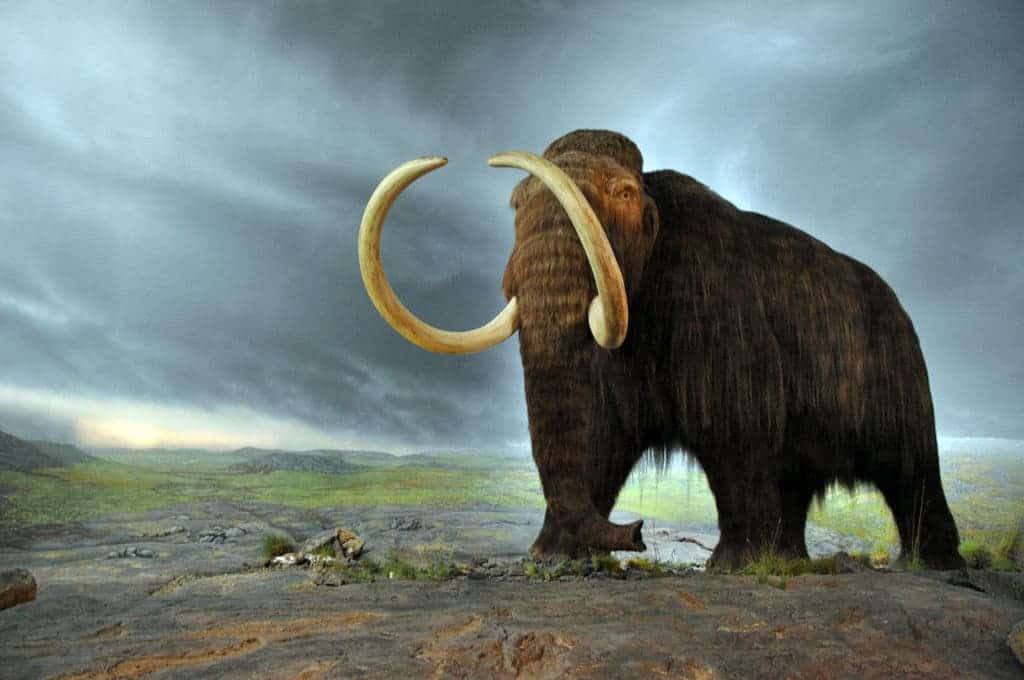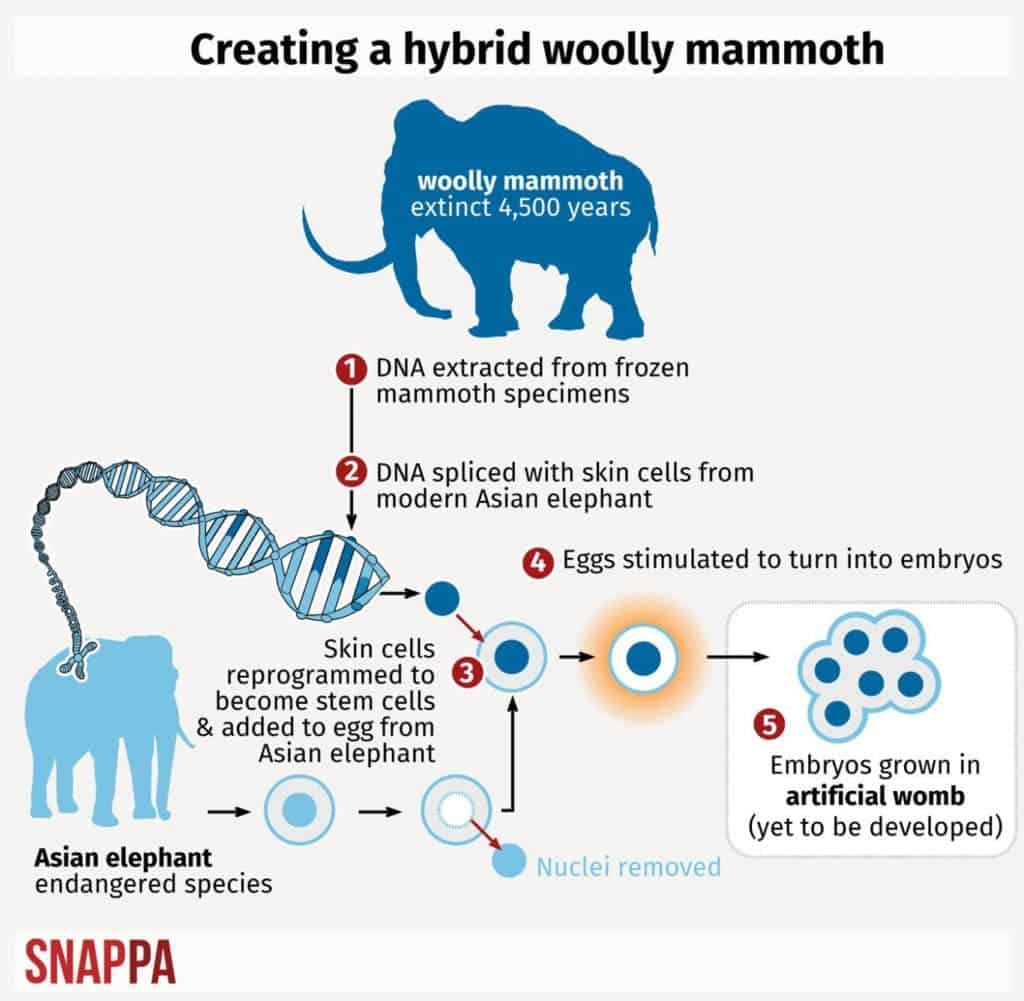Harvard researchers said they’re as close as two years away from resurrecting the woolly mammoth, a megafauna that went extinct around 5,600 years ago. This is a partial resurrection, however, as de-extinction will involve breeding the beast from a hybrid embryo. Specifically, mammoth trails would be programmed into an Asian elephant.
“Our aim is to produce a hybrid elephant-mammoth embryo,” said Prof George Church, Professor at Harvard & MIT. “Actually, it would be more like an elephant with a number of mammoth traits. We’re not there yet, but it could happen in a couple of years.”
Crossing mammoth DNA with an elephant’s should result in a peculiar looking creature. The researchers think it would have small ears, the mammoth’s signature long and shaggy hair and blood that’s adapted to freezing temperatures.
All of this is possible thanks to a modern genetic tool called CRISPR which relies on DNA-cutting enzymes to slice open DNA at a target site to edit a specific gene. For this reason, it’s often called a ‘genetic scissor.’ Using CRISPR, scientists previously showed its possible to cure genetic disorders in mice or remove HIV genes from live animals. In China, some controversial researchers are even preparing a human trial looking to turn off genes that encode a specific protein linked to a lower immune response.
Make no mistake, this is an incredibly powerful tool. Now, it could be used to resurrect species from the dead.
Most of the world’s wooly mammoths were killed around 10,500 years ago, the prime causes still up for debate — human hunting, climate change or both have been identified by scientists as prime suspects. But on a small island off the coast of Alaska, an isolated population of wooly mammoths lingered on for thousands of years. They too died around 5,600 years, and with them, their entire species went extinct.
For years, scientists have been toying with the idea of reversing the extinction of the woolly mammoth and some other two dozen species like the Dodo or the Tasmanian tiger. So far, they’ve been inching along starting with the cell stage and, in 2015, they successfully merged the mammoth and modern elephant DNA. This latter step was no trivial affair. While DNA can survive for a long while under the ‘freezer’, it’s far from being perfect. In other words, it’s impractical for cloning purposes, since many bits and pieces have been damaged by the environment. This is why Church and colleagues had to piece together the mammoth DNA with bits from the elephant.
To make the embryo, the Harvard team will first start with skin cells collected from the elephant, then use cloning techniques. Nuclei from the reprogrammed cells would be placed into elephant egg cells whose own genetic material has been removed. To develop into an embryo, the eggs would be artificially stimulated.
Chruch says that once the hybrid embryo is ready, it would be implanted in an artificial womb so no surrogate mother might be harmed. But there are no artificial wombs yet and some say these are at least a decade away. Church disagrees, he says his lab can already a mouse embryo in an artificial womb for ten days and could make an artificial womb far sooner.
Despite this measure, however, critics have voiced some ethical concerns.
“The proposed ‘de-extinction’ of mammoths raises a massive ethical issue – the mammoth was not simply a set of genes, it was a social animal, as is the modern Asian elephant. What will happen when the elephant-mammoth hybrid is born? How will it be greeted by elephants?” said Matthew Cobb, professor of zoology at the University of Manchester, for The Guardian.











